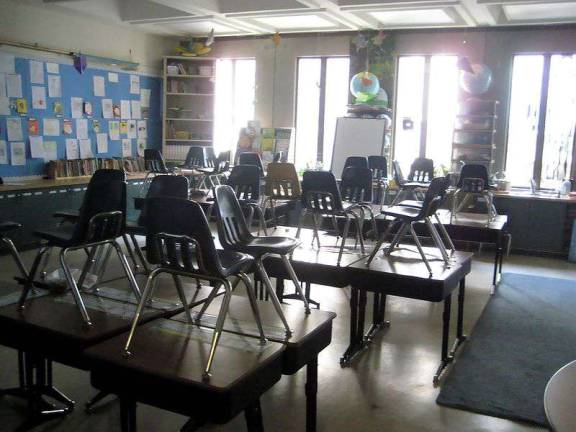As the Department of Education unveils a new school zoning plan for Midtown East, parents are scratching their heads and wondering how and why the lines have been drawn.
The midtown district is undergoing a rezoning to accommodate a new zoned school, PS 281, which is currently being built on East 35th Street. The school will hold K-5 students only, to make way for an influx of kindergarten students, and will eventually reach enrollment of between 580 to 610 students, according to DOE projections. The school is slated to open next fall. The proposed zone lines take a sizeable chunk out of the current zone for PS 116, the Mary Lindley Murray School, which now enrolls students who live east of Fifth Avenue between East 25th and East 43rd streets. The new zone line for PS 281 runs up Second Avenue, splitting that zone in two parts, while also taking small pieces from PS 40, the Augustus Saint-Gaudens School, in the south and PS 59, Beekman Hill International, in the north. The zone for PS 267, a new school that currently only has kindergarten, first and second grade but will grow to fifth grade, will expand by several blocks to the south while the other affected zones shrink. The changes have left some PS 267 parents saying that their under-enrolled school's zoning hasn't expanded enough, while parents at the other schools have expressed concern that their zones have shrunk too much. "Our zone being too small will absolutely create funding issues," said Jane Thompson, co-chair of PS 116's PTA, at a recent District 2 Community Education Council meeting to discuss the proposed zoning. "We won't be able to provide programs our families are used to receiving." Other parents expressed similar concerns-that their schools will receive less of the per-child allotted funding from the DOE when their enrollment decreases. The DOE maintains that they have accounted for shifts in the populations of the neighborhood and that no schools will face under-enrollment. Not all the parents were buying this argument, however. "The zoning is flawed, and the data is unclear," said Michael Kaushansky, a father of two small children in the neighborhood. "All the zones are actually horizontally zoned except for PS 281. There are a lot of questions with the data, and there are a lot of questions with the methodology." Another frustrated parent said that he and his wife scrimped and saved to afford an apartment in the PS 40 school zone so that their kids could attend the well-regarded school. Now, despite not upgrading their cellphones or taking a vacation in years to achieve that goal, the couple will be forced to send their kid to a new school if the zoning changes are approved. Others echoed the call for more advance notice in changing zones, but the CEC asserted that they can't do anything but react to population changes. "It's virtually impossible to do the rezoning a year and a half ahead of time," said Michael Markowitz, who has been on the CEC for six years and has dealt with many rezoning processes in that time. "The population of kids is going up faster than we can build our way out of it." The Office of Portfolio Management, within the DOE, creates the zoning proposals, and based the latest updates on the current overcrowding at popular East Side schools, especially PS 116. The DOE also contends that the rezoning will allow principals more flexibility in their programming and give schools smaller average class sizes, at least in the short term. The new zoning, if approved by the CEC, would take effect for the 2013-14 academic year. Those who still wish to provide feedback to the CEC on the proposal can email comments to d2zoning@gmail.com.

